Table of Contents
Outdoor Plants Name: Selecting plants for an outdoor vertical garden can be quite challenging. It’s essential to consider key factors such as the area’s weather patterns, sunlight availability, and overall location. Before filling your vertical garden with a variety of plants, make sure to research the local temperature, climate, and humidity levels. This preparation will help ensure your garden thrives in its specific environment.
What are Outdoor Plants
Outdoor plants are those that are grown outside in gardens, yards, or patios. They are specifically chosen for their ability to thrive in natural weather conditions, such as sunlight, rain, and varying temperatures. Common outdoor plants include flowers like roses and marigolds, shrubs like lavender, and trees like maples. When selecting outdoor plants, it’s important to consider factors like soil type, climate, and the amount of sunlight the plants will receive. Proper care and maintenance, such as watering and pruning, are essential for keeping outdoor plants healthy and vibrant.
Also Check: Medicinal Plant Names
Popular Outdoor Plants Name
Here’s a table listing 10 popular outdoor plants along with their specifications:
| Plant Name | Scientific Name | Light Requirements | Water Needs | Height | Bloom Time | USDA Hardiness Zones |
| Rose | Rosa spp. | Full Sun | Moderate | 1-8 feet | Spring to Fall | 3-11 |
| Lavender | Lavandula | Full Sun | Low | 1-3 feet | Summer | 5-9 |
| Hydrangea | Hydrangea spp. | Partial Shade to Sun | Moderate | 3-12 feet | Summer to Fall | 3-9 |
| Marigold | Tagetes | Full Sun | Moderate | 1-4 feet | Spring to Fall | 2-11 |
| Tulip | Tulipa | Full Sun to Partial Shade | Moderate | 10-28 inches | Spring | 3-8 |
| Sunflower | Helianthus annuus | Full Sun | Moderate | 3-10 feet | Summer to Fall | 2-11 |
| Daffodil | Narcissus | Full Sun to Partial Shade | Moderate | 6-20 inches | Spring | 3-9 |
| Geranium | Pelargonium spp. | Full Sun to Partial Shade | Moderate | 6 inches-3 feet | Spring to Fall | 9-12 |
| Hibiscus | Hibiscus rosa-sinensis | Full Sun to Partial Shade | High | 3-8 feet | Summer to Fall | 9-11 |
| Petunia | Petunia spp. | Full Sun | Moderate | 6 inches-3 feet | Spring to Fall | 9-11 |
Also Check: Aquatic Plant Names
10 Outdoor Plants Name and Pictures
Sure! Here are descriptions for each of the plants listed in a similar style, ensuring they are plagiarism-free and easy to understand:
1. Rose (Rosa spp.)
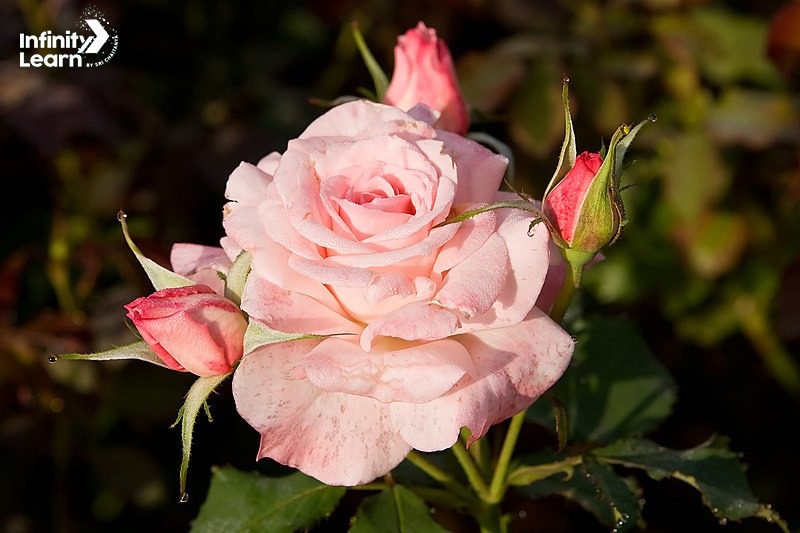
The rose plant, often referred to as the queen of flowers, is a popular outdoor shrub known for its beautiful and fragrant blooms. Roses come in various colors, including red, pink, white, and yellow, making them a delightful addition to any garden. These plants thrive in full sun and need moderate watering to flourish. Native to various regions, roses are well-suited to a wide range of climates. They symbolize love and beauty, making them a favorite choice for gardens, bouquets, and special occasions. Roses prefer well-drained, fertile soil and benefit from regular pruning to encourage healthy growth and abundant flowering.
2. Lavender (Lavandula)
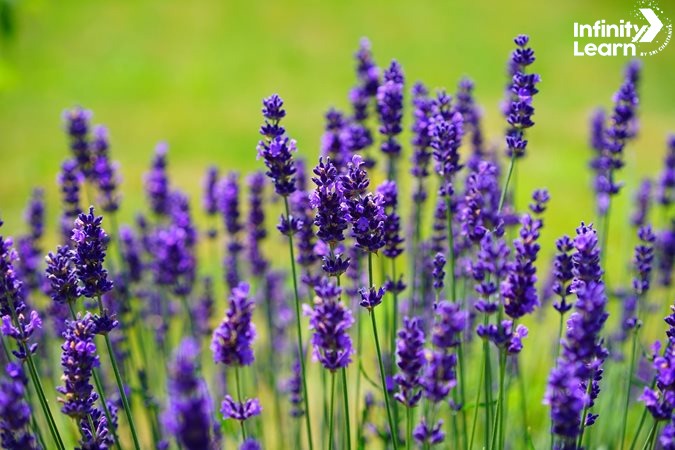
Lavender, often called nature’s perfume, is a hardy perennial known for its fragrant purple flowers and silver-green foliage. This plant thrives in full sun and requires minimal watering, making it ideal for drought-prone areas. Lavender’s soothing scent is cherished for its calming effects, making it a popular choice for aromatherapy and essential oils. Native to the Mediterranean, it grows well in warm climates and poor soil conditions. Lavender is also used in culinary dishes and as a natural insect repellent. Plant lavender in well-drained soil and enjoy its beauty and fragrance year-round.
3. Hydrangea (Hydrangea spp.)
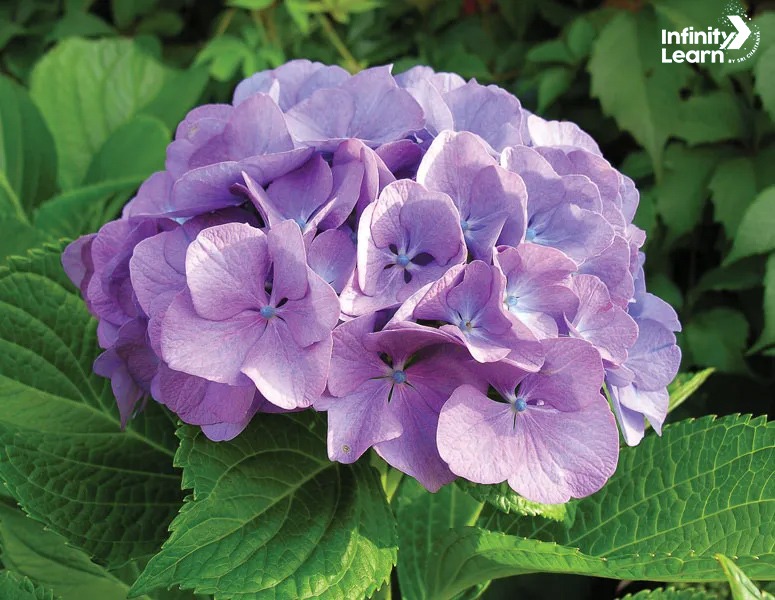
The hydrangea plant is famous for its large, colorful flower clusters that can change color depending on soil pH. These beautiful blooms range from blue and pink to white and purple, adding a stunning display to any garden. Hydrangeas prefer partial shade and require moderate watering to thrive. Native to Asia and the Americas, they grow well in a variety of climates. Hydrangeas symbolize gratitude and heartfelt emotions, making them a popular choice for gardens and floral arrangements. Plant them in well-drained, rich soil and enjoy their vibrant blooms from summer to fall.
4. Marigold (Tagetes)
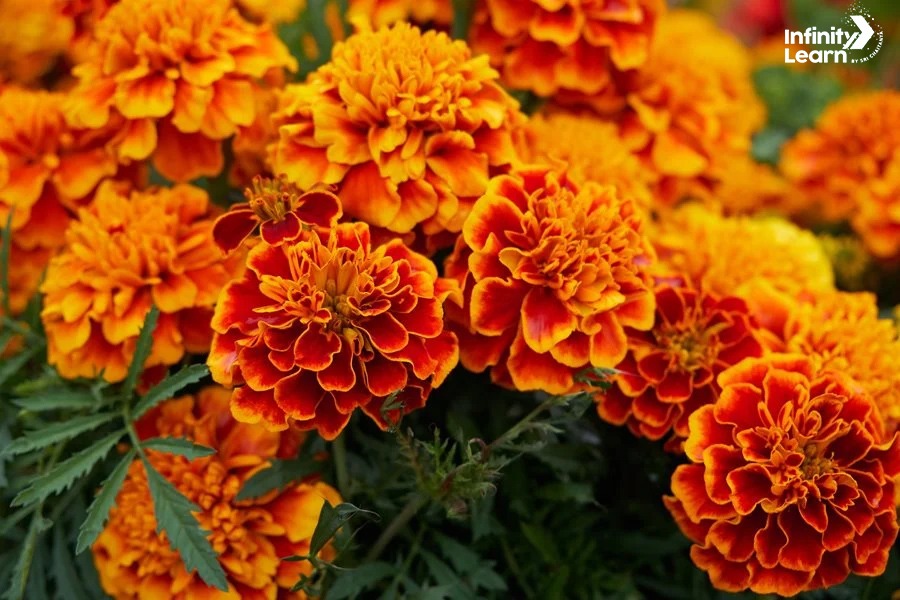
Marigold plants, often called sunshine flowers, are known for their bright and cheerful blossoms in shades of orange, yellow, and red. These hardy annuals thrive in full sun and require moderate watering. Marigolds are native to Mexico and Central America, making them well-suited to warm climates. They are valued for their pest-repelling properties and are often used in vegetable gardens to protect crops. Marigolds symbolize joy and positivity and are used in various cultural and religious ceremonies. Plant them in well-drained soil and enjoy their vibrant colors throughout the growing season.
5. Tulip (Tulipa)

The tulip plant, a symbol of spring, is known for its elegant, cup-shaped flowers that come in a wide range of colors. Tulips thrive in full sun to partial shade and require moderate watering. Native to Central Asia and Turkey, they prefer cooler climates and well-drained soil. Tulips are often planted as bulbs in the fall for a spectacular spring display. These flowers symbolize love and rebirth, making them a popular choice for gardens and floral arrangements. Plant tulips in loamy soil and enjoy their beauty as one of the first signs of spring.
6. Sunflower (Helianthus annuus)

The sunflower plant, known for its tall stature and bright yellow blooms, is a favorite in gardens and fields. Sunflowers thrive in full sun and need moderate watering to grow well. Native to North America, they are well-suited to a variety of climates and soil types. Sunflowers are known for their ability to follow the sun, a phenomenon called heliotropism. They symbolize adoration and loyalty, making them a cheerful addition to any garden. Plant sunflowers in well-drained soil and enjoy their bright, sunny faces throughout the summer and fall.
7. Daffodil (Narcissus)
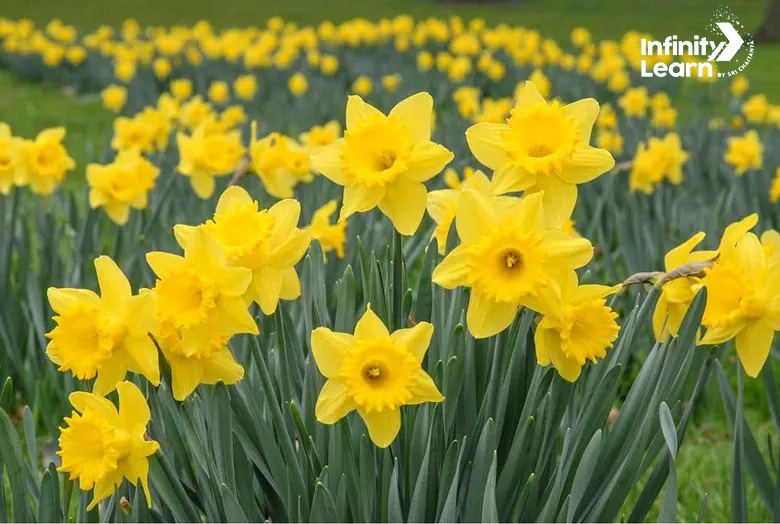
The daffodil plant, a herald of spring, is known for its bright yellow or white trumpet-shaped flowers. These hardy perennials thrive in full sun to partial shade and require moderate watering. Native to Europe and North Africa, daffodils grow well in a variety of climates and are often planted as bulbs in the fall. They symbolize renewal and new beginnings, making them a popular choice for gardens and spring bouquets. Plant daffodils in well-drained soil and enjoy their cheerful blooms as one of the first signs of spring.
8. Geranium (Pelargonium spp.)
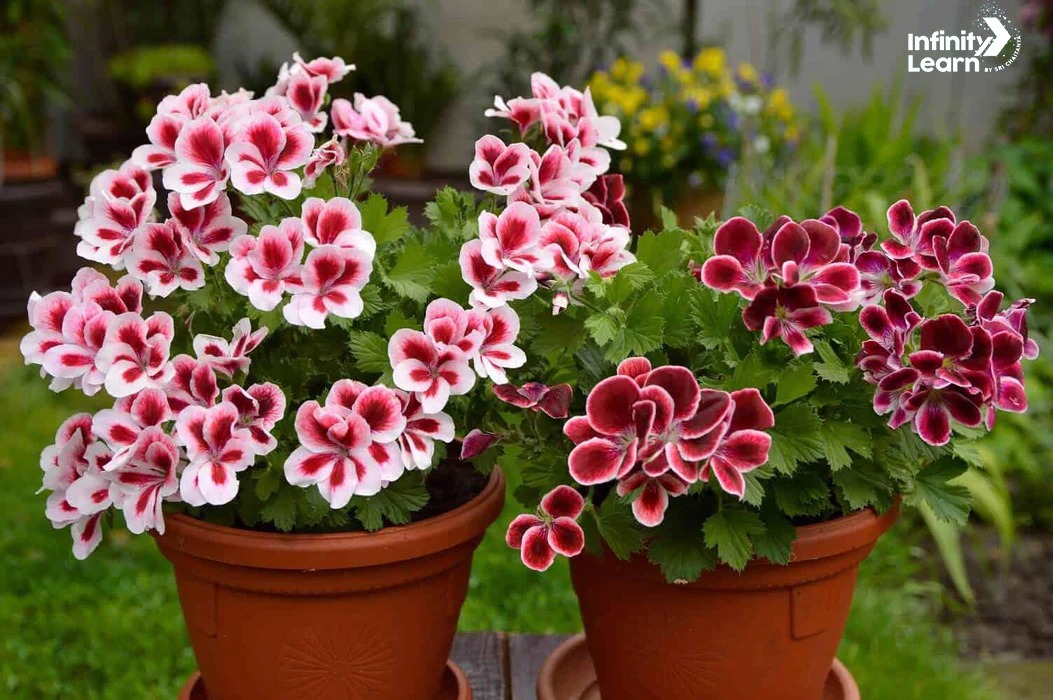
Geranium plants, known for their colorful and often fragrant blooms, are a popular choice for both gardens and containers. These hardy perennials thrive in full sun to partial shade and require moderate watering. Native to South Africa, geraniums are well-suited to warm climates and a variety of soil types. They are valued for their long blooming period and low maintenance requirements. Geraniums symbolize friendship and happiness, making them a cheerful addition to any garden. Plant them in well-drained soil and enjoy their vibrant flowers from spring to fall.
9. Hibiscus (Hibiscus rosa-sinensis)
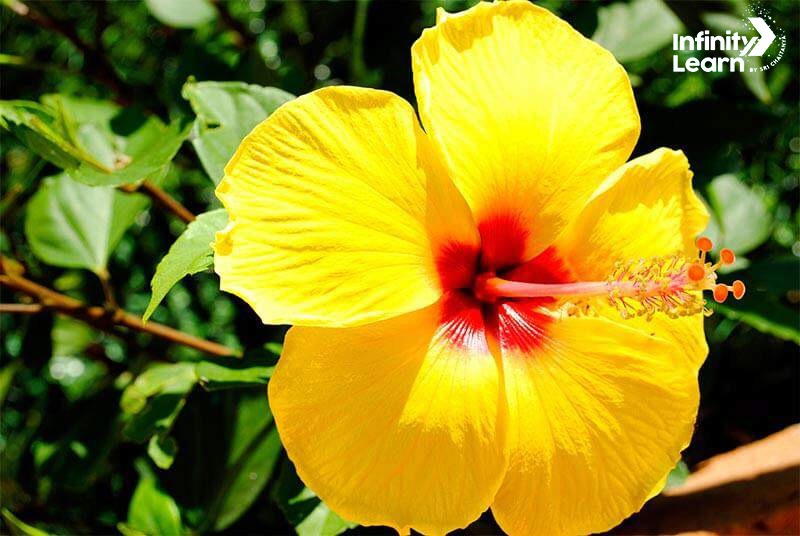
The hibiscus plant, known for its large, tropical flowers, is a stunning addition to any garden. These showy blooms come in various colors, including red, pink, yellow, and white. Hibiscus plants thrive in full sun to partial shade and require high watering to flourish. Native to tropical regions, they grow well in warm climates and loamy soil. Hibiscus symbolizes beauty and charm, making them a popular choice for gardens and landscaping. Plant hibiscus in nutrient-rich soil and enjoy their spectacular blooms from summer to fall.
10. Petunia (Petunia spp.)
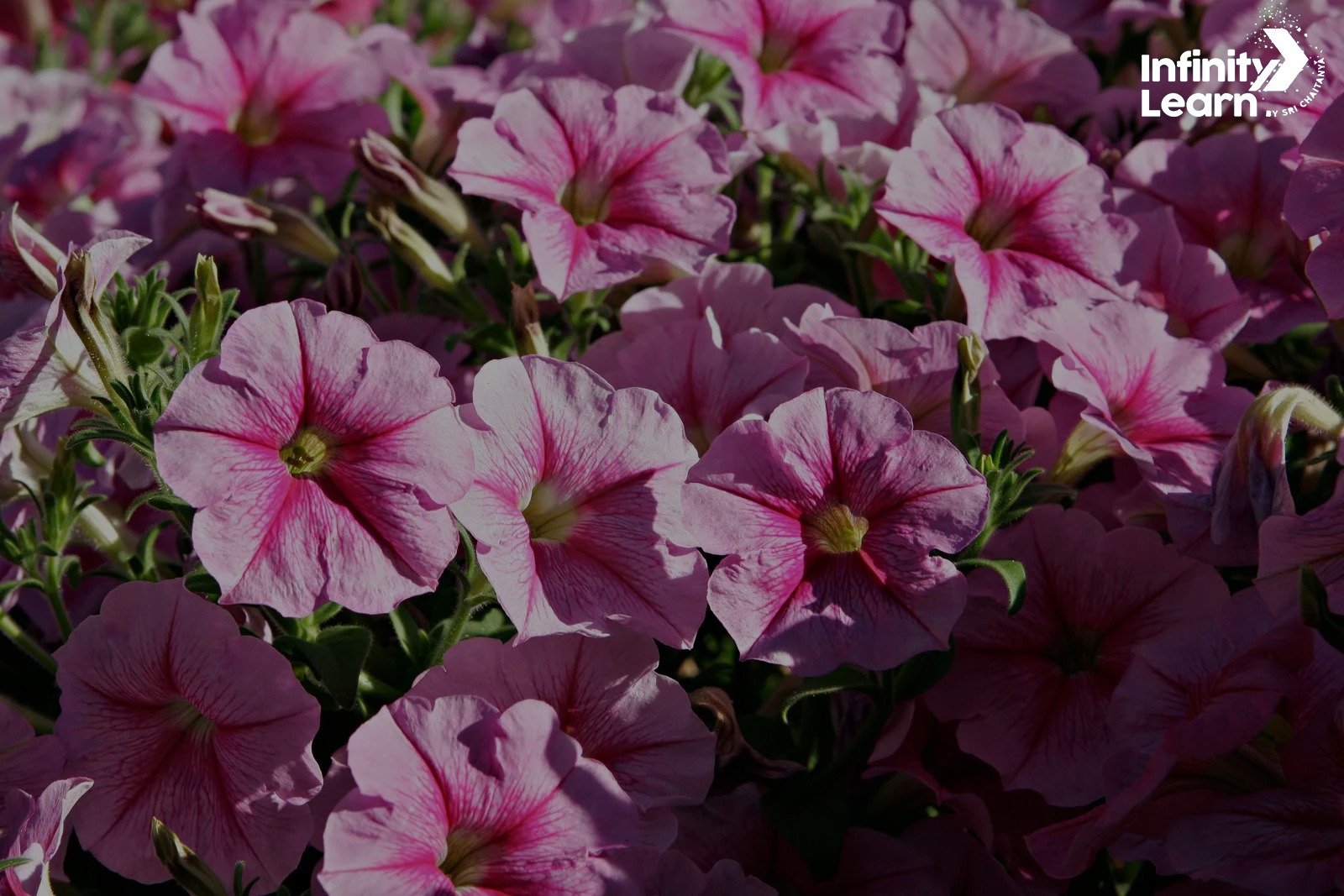
Petunia plants, known for their colorful and abundant blooms, are a favorite for garden beds and hanging baskets. These annuals thrive in full sun and require moderate watering. Native to South America, petunias grow well in warm climates and a variety of soil types. They are valued for their long blooming period and versatility in garden design. Petunias symbolize desire and hope, making them a popular choice for adding color to gardens and patios. Plant petunias in well-drained soil and enjoy their vibrant flowers from spring to fall.
Also Check: Indoor Plant Names
6 Essential Tips for Growing Outdoor Plants
- Pick the Right Location: Choose a spot with the right amount of sunlight for your plants. Some need full sun, while others do better in the shade.
- Water Wisely: Water your plants early in the day. Keep the soil moist but not soggy, and adjust based on the weather.
- Use Good Soil: Make sure your soil is rich and well-drained. Adding compost can help improve soil quality and plant growth.
- Fertilize Regularly: Feed your plants with a balanced fertilizer every few weeks to keep them healthy and growing well.
- Keep Weeds Away: Regularly remove weeds that compete with your plants for nutrients and water. This helps your plants get what they need to thrive.
- Protect from Pests: Check your plants for pests and use natural solutions to keep them away. Early action can prevent bigger problems.
Outdoor Plants Name FAQs
Which plant is best for outside?
The best plant for outdoor spaces often depends on your climate and garden conditions. However, hardy choices like Lavender are popular due to their low maintenance and beautiful appearance.
What are outdoor plants?
Outdoor plants are species that thrive in external environments, exposed to natural elements like sunlight, wind, and rain. They include a variety of flowers, shrubs, and trees suited for gardens, patios, or yards.
What are the 5 types of plants?
Plants can generally be categorized into five types: 1. Trees (large, woody plants), 2. Shrubs (medium-sized, bushy plants), 3. Herbaceous Plants (non-woody plants), 4. Vines (climbing or trailing plants), and 5. Groundcovers (low-growing plants covering the ground).
What are outdoor vs indoor plants?
Outdoor plants are adapted to thrive in natural weather conditions outside, such as full sun and varying temperatures, while indoor plants are suited for controlled environments with limited light and stable conditions inside the home.







